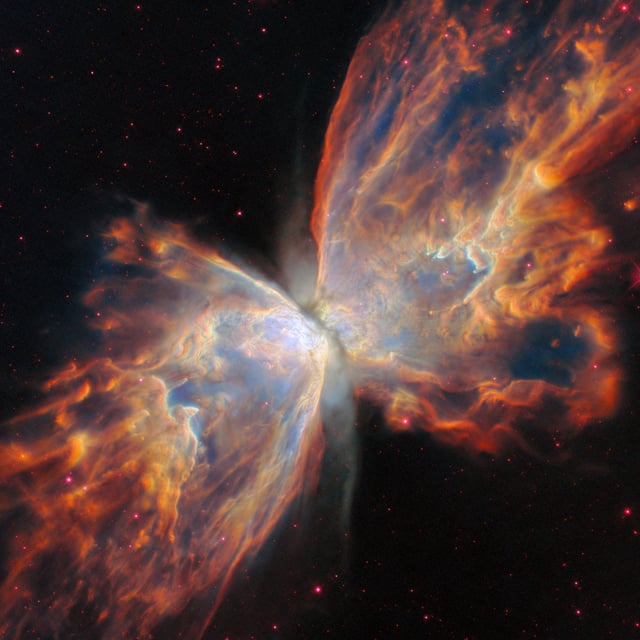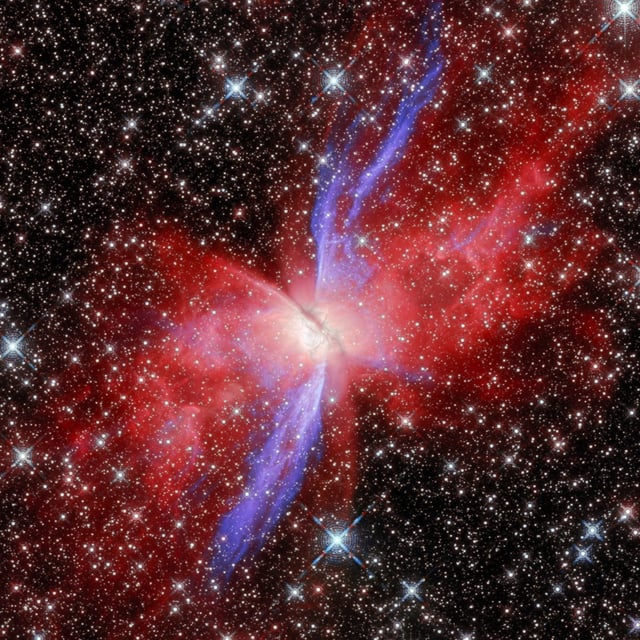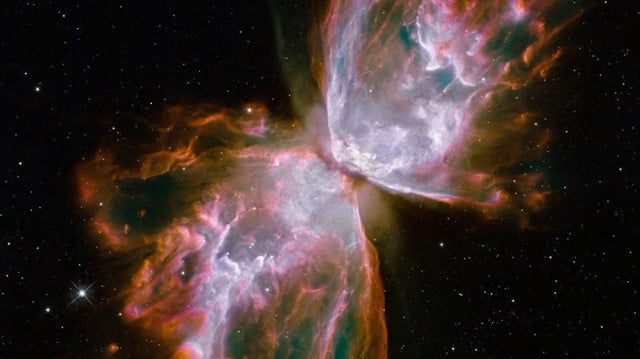Overview
- JWST’s MIRI integral-field spectroscopy pinpointed the long-hidden central star and revealed a warm dust cloud shining in mid-infrared light.
- The star’s temperature is about 220,000 Kelvin, placing it among the hottest known central stars of planetary nebulae in the Milky Way.
- Nearly 200 spectral lines map nested chemical and ionization layers, with a dense torus made of crystalline silicates, including quartz, and relatively large dust grains.
- Emission from iron and nickel delineates opposing jets and interconnected bubbles that show the nebula is dynamically shaped rather than quiescent.
- The team reports PAH emission in this oxygen-rich environment as possible first evidence of such molecules forming there, with results published in MNRAS using complementary ALMA data.


